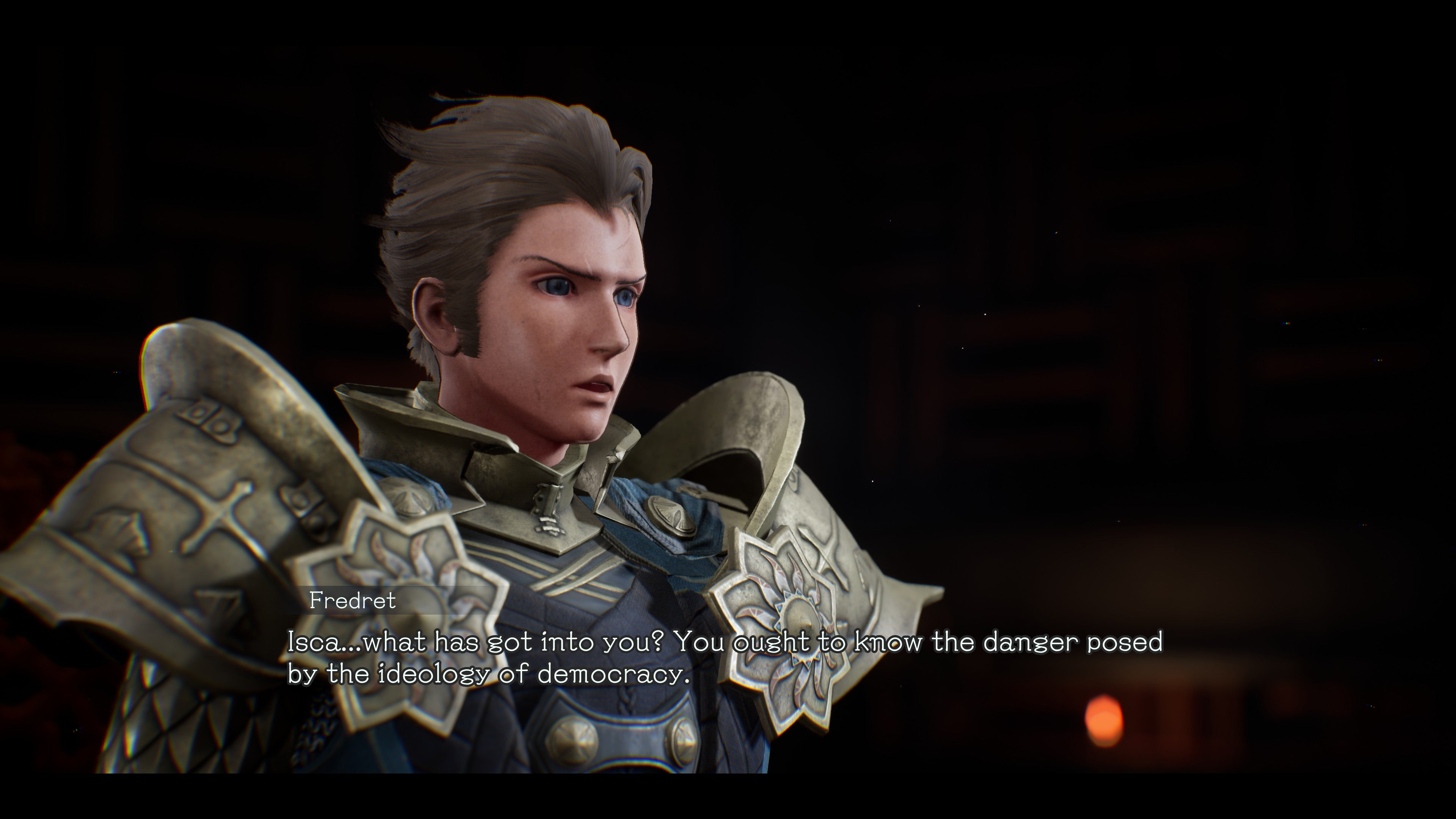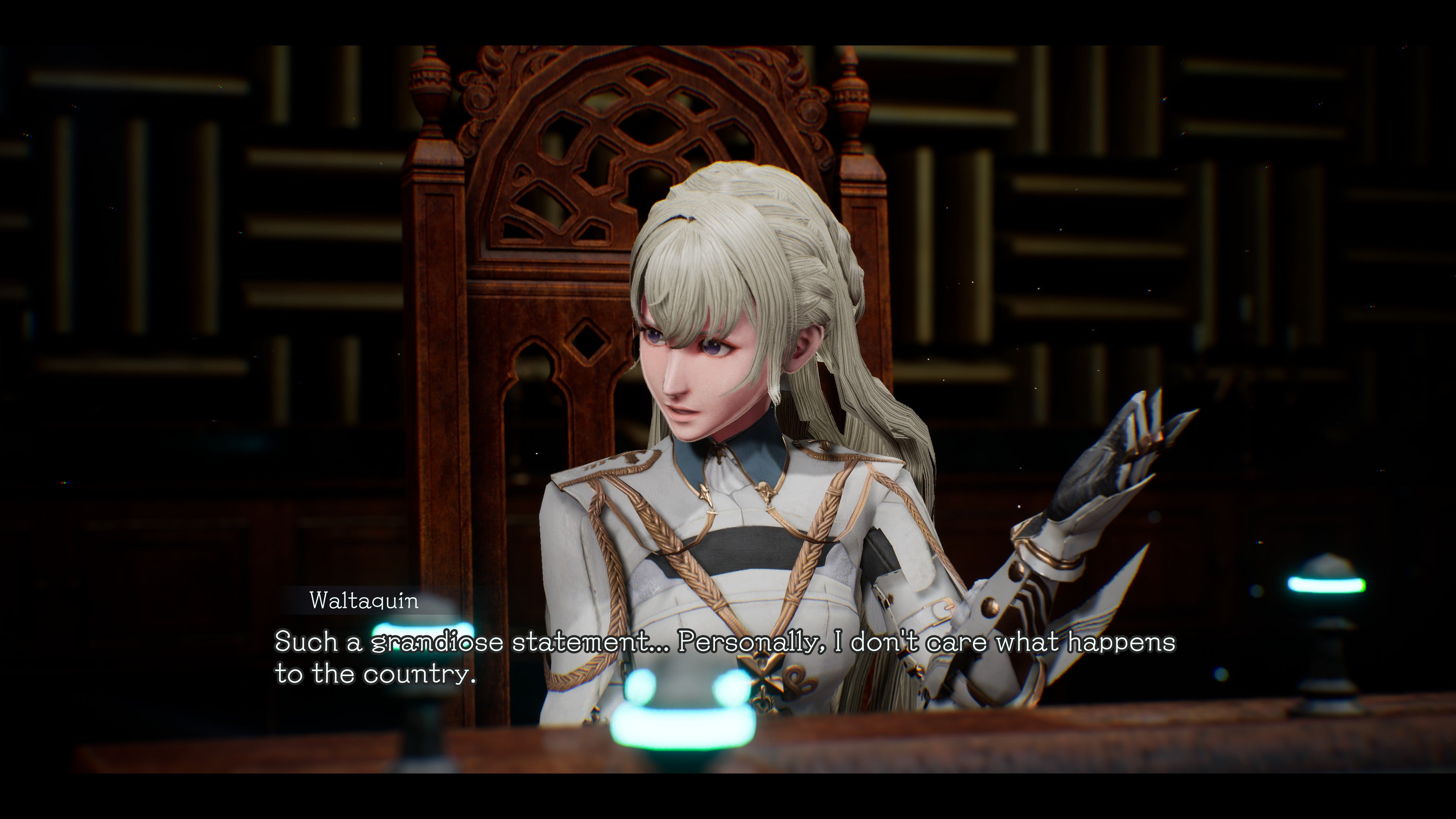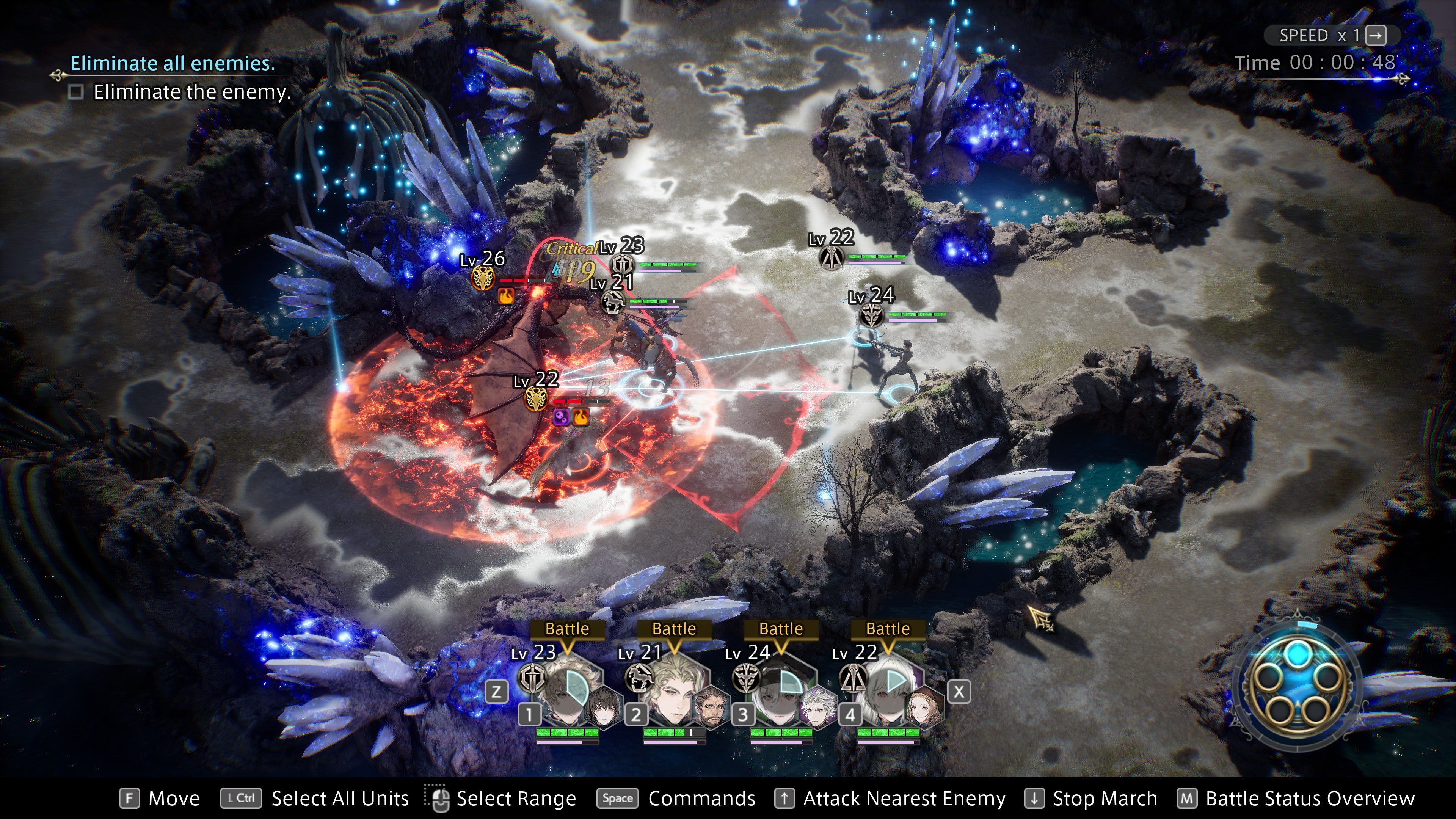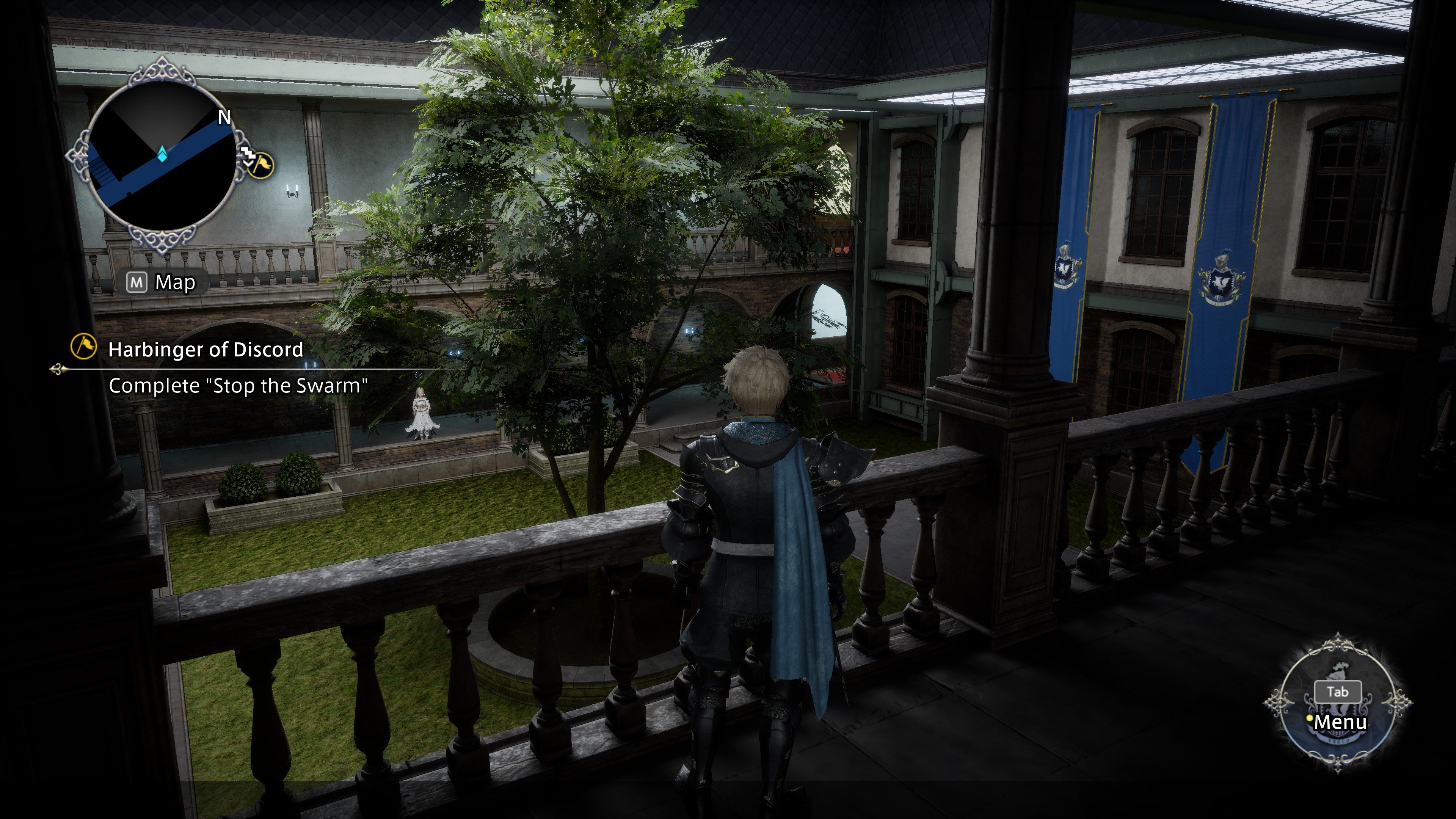Around 8-10 hours into the game, there’s an extended portion of the campaign that sees your band of Blue Fox mercenaries bringing an entire region of DioField Island to heel because they’re, err, pro democracy. Of the cast’s central quartet, only one stands up as a voice of reason when motions are made to quell these despicable riots, but he’s repeatedly shot down every time he tries to offer an alternate view. Eventually, one character says to him, and I quote, “Isca, what has got into you? You ought to know the danger posed by the ideology of democracy.” It’s an odd stance for someone clearly not a villain to take in 2022, although really, I should have probably seen it coming. Our mercs work for a duke after all, and most are aristocratic nobles who are handy with a sword. Oh no. I think this might actually be played: Tories - The Game. Yuck. It’s a strange sensation. I kept waiting for the penny to finally drop. For more characters to start questioning their lord’s motives, or at least do it a wee bit faster. But six hours went by, then eight, then ten, and still nothing seemed to quite click into place. The DioField Chronicle’s story of invading nations and rebel armies is complex and convoluted to follow at the best of times, with one nefarious lord seamlessly replacing another as soon as they’re put to the sword, but never have I felt so alienated by a game’s main cast before. There are a couple of good eggs to be found among its scheming leads - Iscarion, for one, as well as country lass Rickenback, and maybe the young mage Estalt at a push - but when the majority of them are such a disagreeable bunch, it makes following DioField’s story of political backstabbing a bit of a chore. There’s none of that Fire Emblem-style giddiness on show to make you want to rush back to your explorable camp between missions, and watching these once righteous characters turn into proto tyrants all a bit disappointing. Indeed, the transformation of one character in particular from mysterious cleric to an entitled, blood-crazed maniac is so violent and sudden that it completely destroys any sense of goodwill that might have been building toward her. It’s enough to make you hold up your hands and say, “I’m out,” before you even get to the game’s halfway point. Never mind sticking around to see if things get any better. As far as I’m concerned, this entire caravan of warriors can all trundle straight into the sea. There are vignette sub-quest conversations you can pursue to help fill out some of their back stories, but your only reward for doing so is a wad of cash. Getting to know these characters doesn’t bring any tangible benefits to you in battle, nor does pairing characters together as leads and reserves. It’s all just a cold exchange of skills and services, completely lacking the heart and sincerity that makes Fire Emblem so moreish both on and off the battlefield. It’s a real shame, as the actual moment to moment combat is really quite exciting. Battles play out in real-time in The DioField Chronicle, albeit with a healthy dose of tactical pause to allow time for issuing orders, manoeuvring your party of four and discovering enemy sight lines. You can select individual enemies for your team to attack automatically, but the real fun comes from unleashing their respective special attacks. These all have their own associated cost you’ll need to manage and occasionally top up over the course of a mission, but their vibrant visual flourishes bring a welcome sense of drama to the battlefield and are as satisfying to watch as any Final Fantasy battle. Positioning plays a key role in DioField’s scraps as well, with characters doling out heftier ‘ambush’ attacks if they’re stationed behind an enemy. A lot of special abilities will help you get into these prime positions, but others will also push enemies back, or cover specific areas of effect. All of this applies to your enemies as well, though, and even just making simple adjustments to get your party out of the crosshairs of a fire-breathing dragon attack, or landing a well-timed stun arrow to halt the devastating swing of an axe is just as tense and thrilling as dealing a killing blow. There’s a lot to dig into with the four main character classes as well, with upgradeable abilities, weapons (which also dictate said abilities) and Final Fantasy-style summon monsters all available to power up and expand as you gain more resources. However, while there is a Fire Emblem-style rock paper scissors system in place here to make some units more effective against others, it only makes the tiniest of ripples. More often than not, it’s sheer numbers that win the day in DioField Chronicle, and as long as you’ve got most of your party whaling on the same enemy, you’re usually pretty safe. Battles don’t feel stale and repetitive because of this is a testament to the strength and depth of DioField’s mission types, which are constantly chucking new things at you, or offering up new twists on what you’ve done before. It sure knows how to challenge its players, which makes it all the more disappointing when it doesn’t have the story or rich pool of characters to make it sing. Look past the slightly dubious plot and there’s much to enjoy about The DioField Chronicle’s combat, but when it’s a full-priced game I cannot in good conscience say it’s ‘worth a punt’ when half of it leaves such a sour aftertaste. You’ll stop caring about this band of mercs long before they do anything to try and redeem themselves, and there simply are better RPGs and better strategy games out there to sink your teeth into instead. It’s a shame, especially when its free first chapter demo looked so promising just a couple of months ago, but alas, the central cast just absolutely lost me halfway through. It may not be the greatest plot twist you’ve ever seen, but at least you’ll be on the right side of history this time.






